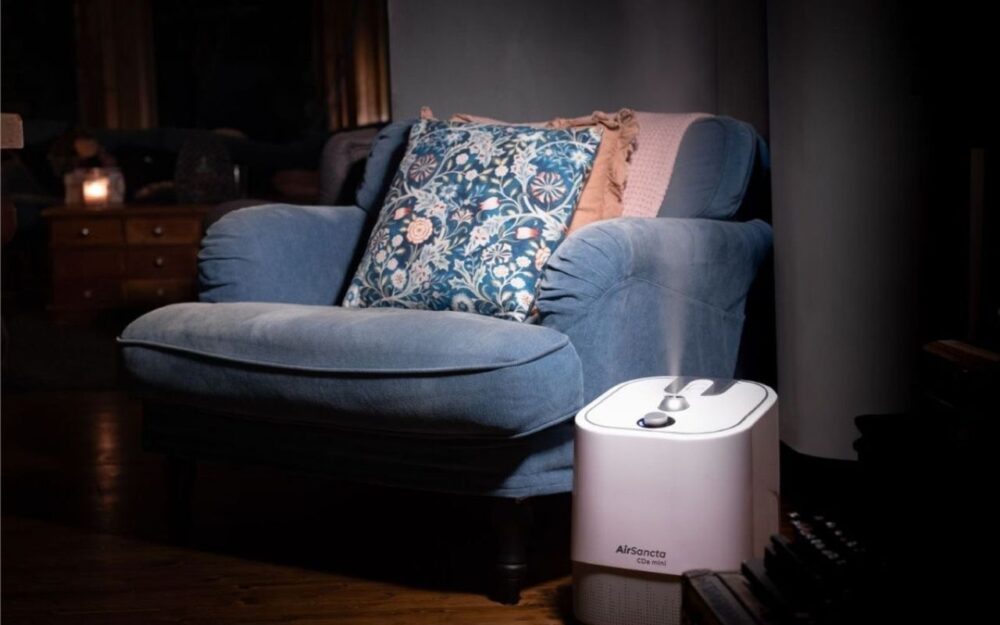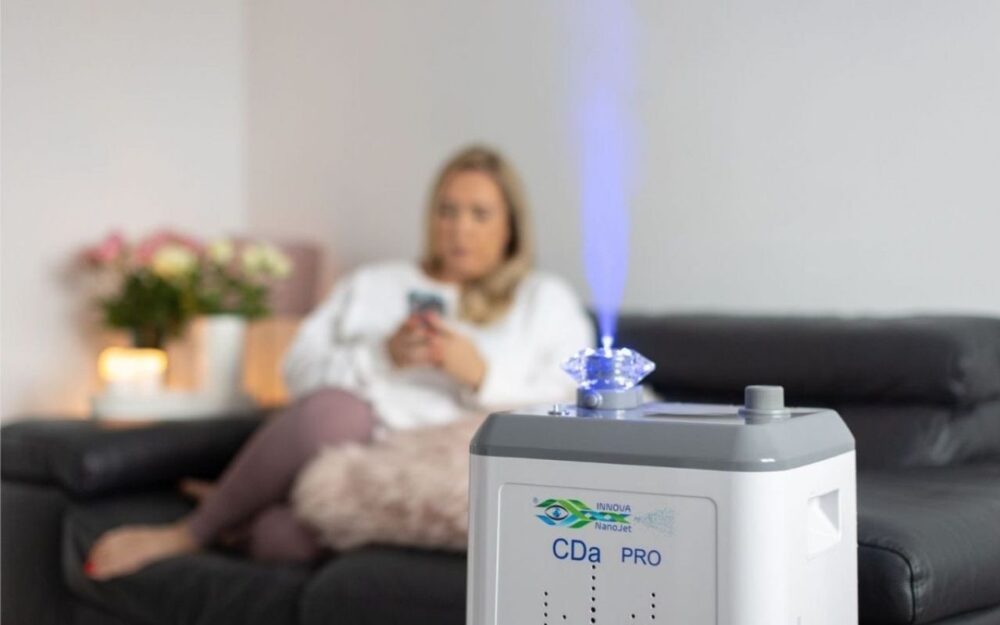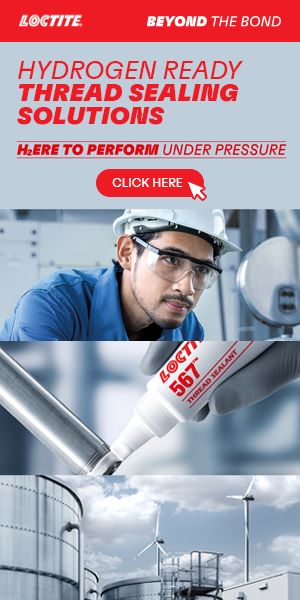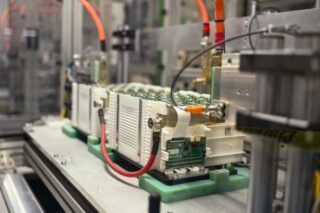When wildfire smoke clears, the air isn’t always safe. Ultrafine hexavalent chromium (Cr(VI)) can linger, moving through buildings and threatening health. For facility managers, the challenge is neutralizing nanoparticle-scale hazards. AirSancta’s NanoJet™ CDa, by UK-based company INNOVA NanoJet provides a filter-free solution to capture these invisible contaminants and protect indoor spaces.
Content provided by INNOVA NanoJet
When wildfire smoke finally thins and the ash settles, communities begin to exhale. Yet evidence from recent California burn zones suggests that the air can remain chemically complex long after the flames are out. Investigations following the Palisades and Eaton fires identified traces of hexavalent chromium (Cr(VI)) in airborne nanoparticle form—an unsettling reminder that post-wildfire air quality isn’t just about soot and odour, but about invisible chemical risks moving through neighbourhoods, workplaces, and public buildings.
For industrial and institutional decision-makers—facility managers, EHS leaders, procurement teams—this poses a dual challenge. First, understanding how low-level, persistent exposures can complicate occupational health, compliance, and business continuity. Second, selecting mitigation technologies that genuinely address nanoparticle-scale threats without creating a new burden of filters, cartridges, and downtime.
The lingering risk: what makes chromium-6 different
Chromium-6 is a well-studied carcinogen, historically associated with industrial processes and made infamous by the Erin Brockovich case. What’s new is where—and how—it’s showing up.
In wildfire aftershock environments, ultra-fine particles carrying or comprising Cr(VI) can persist in ambient air, drift across districts, and infiltrate buildings through routine air exchange. At this scale—often sub-100 nm—particles don’t behave like typical dust. They diffuse, follow gas flows, and are far harder for conventional media to capture efficiently. While measured levels in the field may not breach workplace limits, long-term exposure concerns remain, particularly for vulnerable populations and high-occupancy spaces.
Sources are still being studied. Burned electronics and plastics, tyres, solar panels, or certain fire-suppression chemistries are all plausible contributors. The bigger point is practical: once airborne, nanoparticulate hazards don’t respect property lines or floor plans. If your risk model ends where visible smoke ends, you’re underestimating the tail.
Read also
Why “more filters” isn’t a strategy
Most consumer and light-commercial purifiers were built to remove dust, pollen, and odors. Even good HEPA and activated carbon systems have performance and maintenance limits when confronted with nanoparticle-scale chemical species, complex smoke residues, and mixed airborne loads. Very small particles can bypass media entirely or load it rapidly. Reactive chemistries may not be tuned for specific metals, and some approaches risk secondary by-products. From a facility perspective, an “always-replace” consumables model adds cost, labor, and waste—especially across multi-site portfolios.
The question for industrial and institutional buyers is shifting from “how many filters do we need?” to “how do we physically remove complex, ultra-fine hazards from indoor air without an escalating consumables treadmill?”
A different approach: NanoJet™ CDa
AirSancta’s NanoJet™ CDa (Clean & Disinfect Air) platform was engineered for precisely these complex scenarios. Rather than relying on filter media or chemical cartridges, NanoJet™ employs a water-only, nano-droplet process to tackle mixed airborne loads at source.
Inside the unit, the system generates trillions of ultra-fine droplets—typically below 100 nm—that collide with airborne contaminants, including heavy-metal particulates such as Cr(VI), smoke residues, viruses, bacteria, allergens, and certain chemical pollutants/VOCs. Through physical encapsulation and removal, contaminants are taken out of the breathing zone and managed within the device’s collection pathway. The outcome is an air-cleaning process that addresses nanoparticle behaviour head-on, without filters, cartridges, or added chemicals.
For operators, the advantages are clear: lower maintenance, no filter inventory, simplified routines, and no secondary by-product concerns from aggressive oxidative chemistries. For occupants, the result is an environment less defined by what filters can’t catch and more by what a targeted, physical-capture process consistently removes.
Where it matters most
Post-wildfire recovery—and preparedness—touches a wide range of environments. In hospitals and clinics, patient areas, waiting rooms, and triage spaces benefit from an added air-hygiene layer when wildfire seasons intensify.
Schools and universities can extend protection to classrooms and libraries where attendance and exposure durations are high.
Manufacturing plants and control rooms—where continuity and quality matter—gain resilience against airborne contaminants that could compromise processes or worker wellbeing.
Public buildings, shelters, and transport hubs see the value in protecting high-traffic spaces when communities rely on them most.
Crucially, NanoJet™ CDa systems are deployed today as standalone or mobile units, enabling rapid room-level rollout without any HVAC integration. That makes pilots straightforward and scaling pragmatic: start where risk is highest, validate outcomes, and extend coverage by priority.
What industrial buyers care about
Risk & compliance
Addressing chemical air risks proactively reduces liability, supports occupational health programmes, and demonstrates diligence beyond minimum standards. With the science of nanoparticule exposure still evolving, visibly strengthening indoor air protection is both a safety measure and a signal of leadership.
OPEX & lifecycle
Filterless, water-only operation helps curb consumable costs, supply-chain exposure, and labor tied to frequent media changes. For multi-site organizations, that can translate into significant operational savings and fewer logistics headaches.
ESG & sustainability
Less waste, no chemical cartridges, and energy-efficient operation align with ESG frameworks and responsible procurement—especially relevant as environmental reporting expectations rise across industries.

From pilot to rollout: a practical path
Effective programs start with a risk map: identify high-occupancy spaces and vulnerable populations, plus mission-critical rooms where downtime isn’t an option.
Deploy a pilot in representative spaces—say, a hospital waiting area and a nearby admin office; a school classroom and library; or a plant control room and adjacent break area.
Measure what matters to you: ultrafine particle counts, relevant chemical markers where feasible, reported comfort and odour perception, uptime, and maintenance touch-time.
Use that evidence to operationalize routines—simple water checks and wipe-downs fit easily into existing facility checklists—and then scale by priority across the estate.
Closing: build chemical-aware air resilience
The invisible aftershock of wildfires demands more than standard filtration. It requires a rethink of how we remove complex, ultra-fine hazards from the air people actually breathe. By leveraging water-only nano-droplet capture and a filterless design, AirSancta’s NanoJet™ CDa platform offers industrial and institutional buyers a pragmatic route to cleaner, safer indoor air—one that reduces operational friction while elevating protection.
If you’re a facility decision-maker, now is the time to pilot a chemical-aware air-hygiene layer. Connect with us to discuss deployment options, performance metrics, and a rollout plan that aligns with your risk profile, OPEX goals, and ESG commitments.
Do you know how air purifiers are tested? Watch our video report to know more








![Image [Buying Guide] How to Choose the Right Protection Gloves?](/wp-content/uploads/sites/3/Gloves-1-320x213.jpg)

